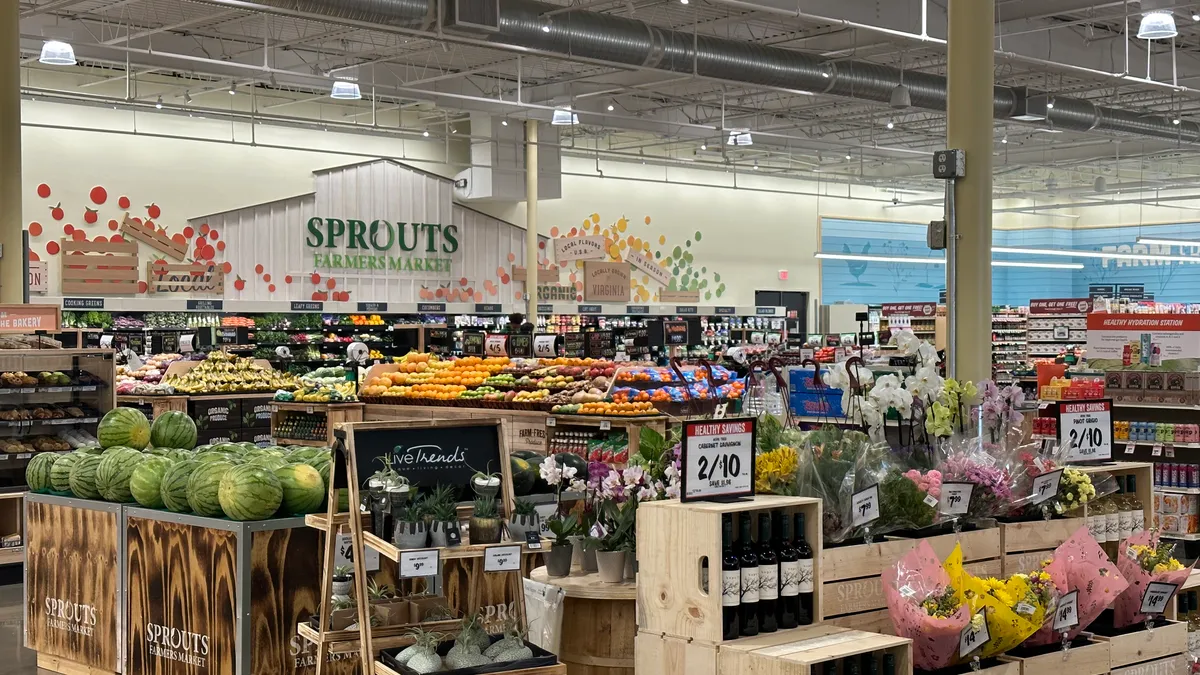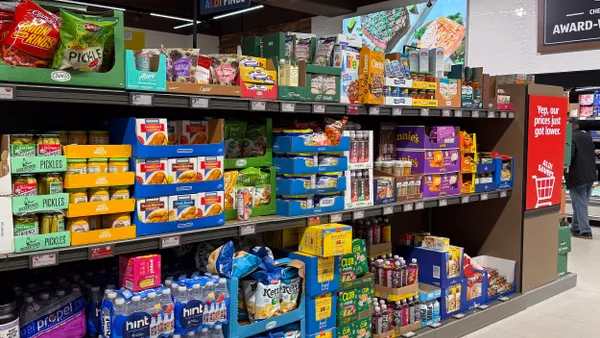Sprouts Farmers Market is set to debut its inaugural loyalty program next month and scale it chainwide by the end of this year — and this is just the latest effort by the specialty grocer that centers its long-term growth around target customers.
Sprouts began implementing a target-customer-first approach to its growth plans five years ago, CEO Jack Sinclair said during a fireside chat at the Deutsche Bank Global Consumer Conference early this month. This plan involves focusing on the $200 billion market of “health enthusiast and innovation seeker” consumers rather than the entire $1.2 trillion grocery marketplace, he said.
Sprouts will continue “shaping the business behind the target customer” as it further develops its supply chain, marketing strategies, product assortment and store growth, Sinclair said.
The upcoming loyalty program serves as both a shopping experience enhancer and a way for the grocer to learn more about its shoppers. Rather than designing the loyalty program to resemble fellow grocers’ apps and memberships, which tend to be more “transactional,” Sprouts took inspiration from retailers like Sephora, REI and Ulta, Sinclair said.
“When you open the app, it’s individual to you,” Sinclair said. “It makes it really clear, that personalization dynamic, so you feel special and feel something special. And we’ll build on that by creating ways to spend your points that go beyond just getting money off [at] the register and how you access different things.”
Sprouts CFO Curtis Valentine noted that the benefits of the loyalty program won’t happen overnight for the grocer and that gathering insight on its lower-frequency customers will take a little longer. However, the grocer still expects the program to “be a tailwind” for the next several years, he said.
Bulking up store footprint, supply chain operations
Sprouts’ switch to a new small-format model has supercharged the grocer’s store growth in recent years. The company has consistently opened at least 30 stores every year since 2023. This year, Sprouts aims to open at least 35 new locations.
East Coast growth was a main focus for Sprouts, as that’s where the company believed its target customers were — and Sprouts was right, the executives said. Whereas five years ago Florida and other states along the Atlantic were considered new markets, Sprouts is on the cusp of categorizing these regions as established markets, according to Valentine.
This year, Sprouts is sticking to opening stores in states where it already has a presence. But the grocer already has its eyes on new markets where it hopes to debut in the coming years.
Sprouts’ sights are set on the Midwest and the Northeast, the executives said during the fireside chat, particularly in Chicago, Boston and the New York metro area, Sinclair said.
Sprouts currently has between 1,200 and 1,400 sites “plotted out” with an ambition to “accelerate our unit growth” come 2027, Valentine said.
To prepare for faster growth, Sprouts is working with its marketing team to establish awareness prior to opening stores, Sinclair said, adding that getting critical mass and exposure are going to be one of the chain’s biggest challenges entering those three metropolitan areas.
“We’re thinking very hard about how we can market and move a little bit faster so that this dynamic of new markets and old markets fuse into one, and we’re just able to open stores everywhere — and a little bit of that is building awareness in advance,” according to Sinclair.
The specialty grocer is also taking a closer look at its supply chain operations, Valentine said, specifically around leveraging self-distribution. The company is currently bringing this approach to its meat and seafood assortment on a wider scale, he said. Sinclair added that Sprouts is also eyeing self-distribution for its supplements and vitamins category. According to Sinclair, having better control over its supply chain will allow the grocer to “control our own destiny.”











